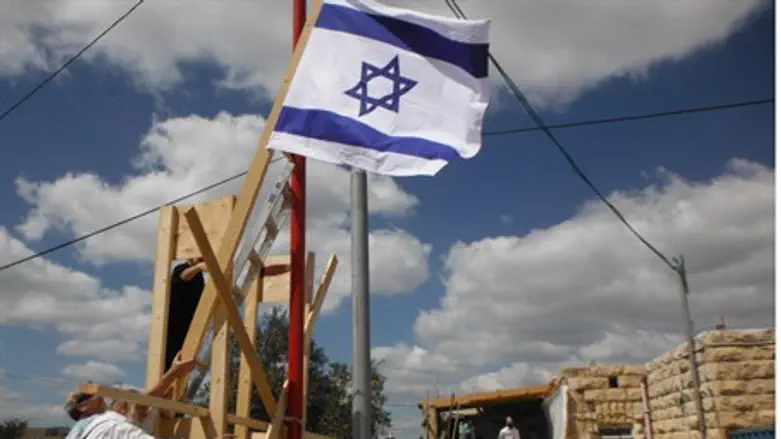
Yitzchak Herskovitz definitely has something to celebrate, after a grueling 18-year fight to evict squatters from his property in Jerusalem's Beit Safafa/Givat Hamatos neighborhood finally came to a happy ending.
A Supreme Court case in 2009 declared Hershkovitz as the property's legal owner, despite the presence of a Bedouin family from the Bethlehem area who took up residence there, and the 82 year-old Jerusalemite celebrated his most recent court victory with a Sukkot party last Wednesday in Jerusalem.
But Herskovitz's battle was not over, as he and local activists battled to get the order enforced. After successfully claiming the land, Herskovitz has scored yet another victory - this time against the Greek Orthodox Church, which contested the plot of land where he wants to build a road to replace the current dirt path. He plans to eventually build a four-story apartment complex on the property and market the units as affordable housing for young Israelis.
Many supporters came to the Sukkah party including Arieh King of the Israel Land Fund, who is currently running for Jerusalem city council on the United Jerusalem/Outlying Neighborhoods List. King has been in the forefront of advocating for historically Jewish property in areas taken over by Arab squatters.
Also present was Nadia Matar of the Women in Grean, a grassroots Zionist organization, who presented Hershkovitz with a large wall hanging embroidered with the the Biblical quote "For Jerusalem's Sake I Will Not Be Silent." It was designed by Women in Green's co-founder Ruth Matar, and now takes its pride of place on a wall in the property, covering leftover Arabic graffiti, including a PLO (Palestine Liberation Organization) flag. Also in attendance was Baruch Gordon of the Beit El Yeshiva Center and others.
Although they fought eviction for almost 18 years, when the courts finally declared them as illegal squatters, the Bedouin family left without resistance and erected dwellings next door to serve as living-quarters and to house their animals, and they watched from nearby as a large Israeli flag was raised over the front yard. Several Israeli flags hoisted in the past have disappeared overnight, Hershkovitz said.
Hershkovitz placed makeshift road signs reading "Orchot Tzaddikim," or Path of the Righteous, the name be wants to give the new road when it eventually gets paved. Due to government regulations, it may take years for building plans to be approved. This week his property was given an official address by the Jerusalem municipality.
Beit Safafa (also spelled Beit Tsafafa) has Jewish roots but for decades has been almost entirely Arab-populated after its Jewish population was driven out. During the Jordanian period of 1948 - 1967, the community was divided along the railroad tracks between Israeli Beit Safafa and Jordanian Beit Safafa. Hershkovitz's particular plot of land is on the outskirts of the community in an area once inhabited by Armenians.
Like many formerly Jewish towns and neighborhoods, the name Beit Safafa has Hebrew origins, and multiple winepresses and other artifacts have been excavated dated back to the Iron Age.
Archaeologists also discovered fifty graves dating back to the time of the Second Temple. According to Boaz Zissu of the Israel Antiquities Authority, 41 of the graves have been excavated so far. He likens them to those in Qumran and theorized they could be from the Essenes, an ancient Jewish community.
Last year the Jerusalem municipality rezoned portions of land in the area to be part of the adjacent Givat Hamatos neighborhood and plans to construct over 3,000 high-end housing units.
Hershkovitz plans to continue to develop the property step-by-step until it is inhabited by the young Jewish couples he envisions one day living there.